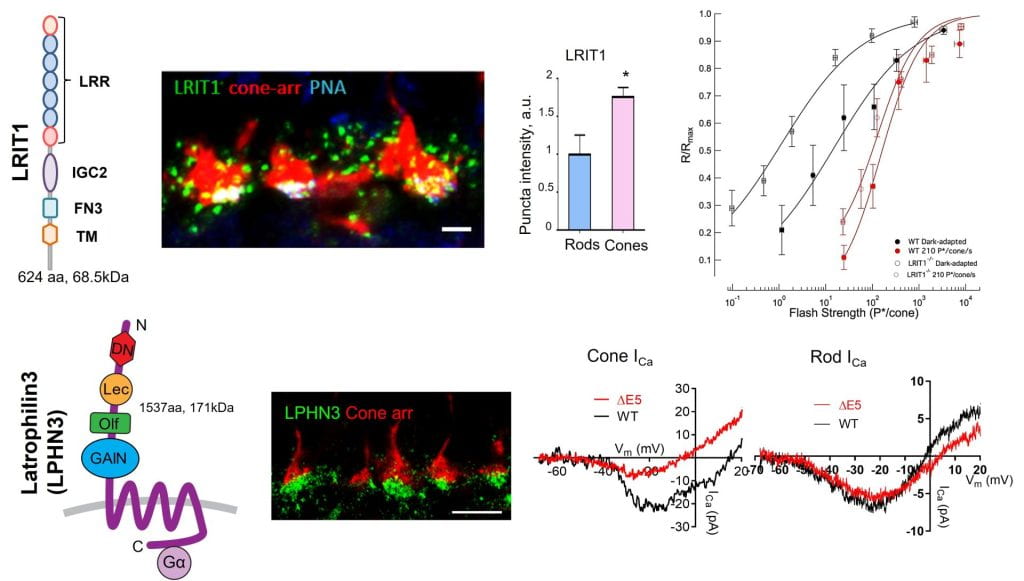The stereotyped function of retinal circuits hinges upon structurally and functionally specified retinal synapses. While most work focused on synaptogenic cell adhesion molecules (CAMs) which are essential for general synapse formation (e.g. recruitment of basic building blocks common to most synapses), CAMs which are responsible for synaptic specification are less known.
Our previous studies shown that members of Leucine-rich repeat cell adhesion molecules (LRR-CAMs) and adhesion G-protein coupled receptor (aGPCR) are expressed in a cell-type specific fashion and control the selective wiring and specification of retinal photoreceptor synapses (Cao et al., Neuron 2015; Cao et al., PNAS 2020; Sarria Cao Wang et al., Cell Reports 2018; Wang et al., 2021 PNAS). Together, we hypothesize that differentially expressed CAMs serve as general regulators of synapse specificity.

Adhesion GPCR, Latrophilin3, is specifically expressed at cone synapse and changes in LPHN3 function only affects cone synaptic releasing and transmission but not that of rod photoreceptors.
